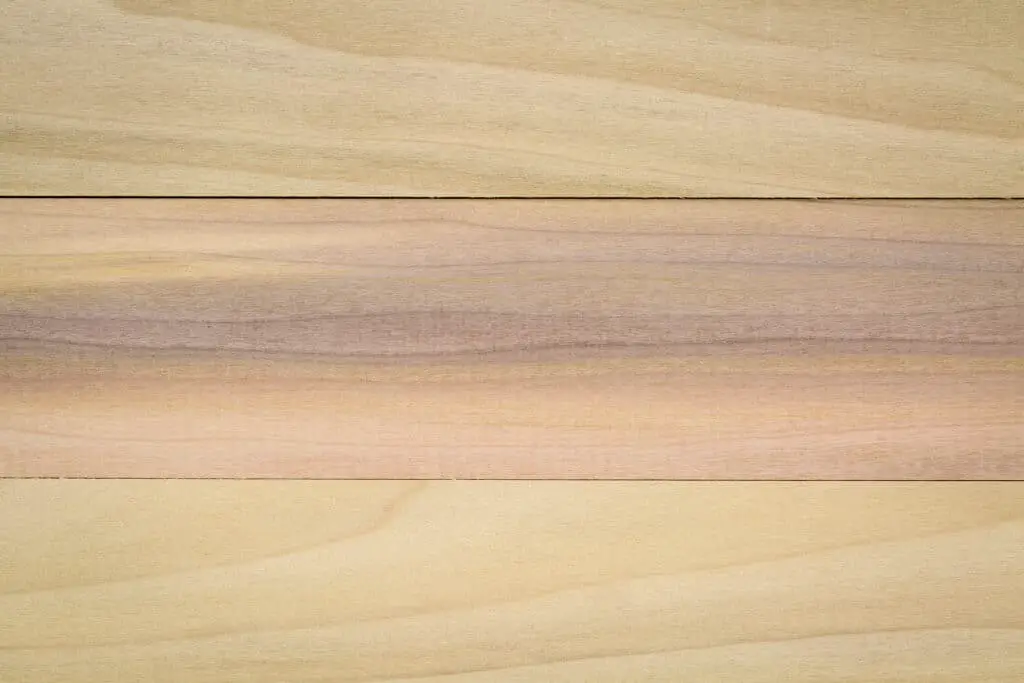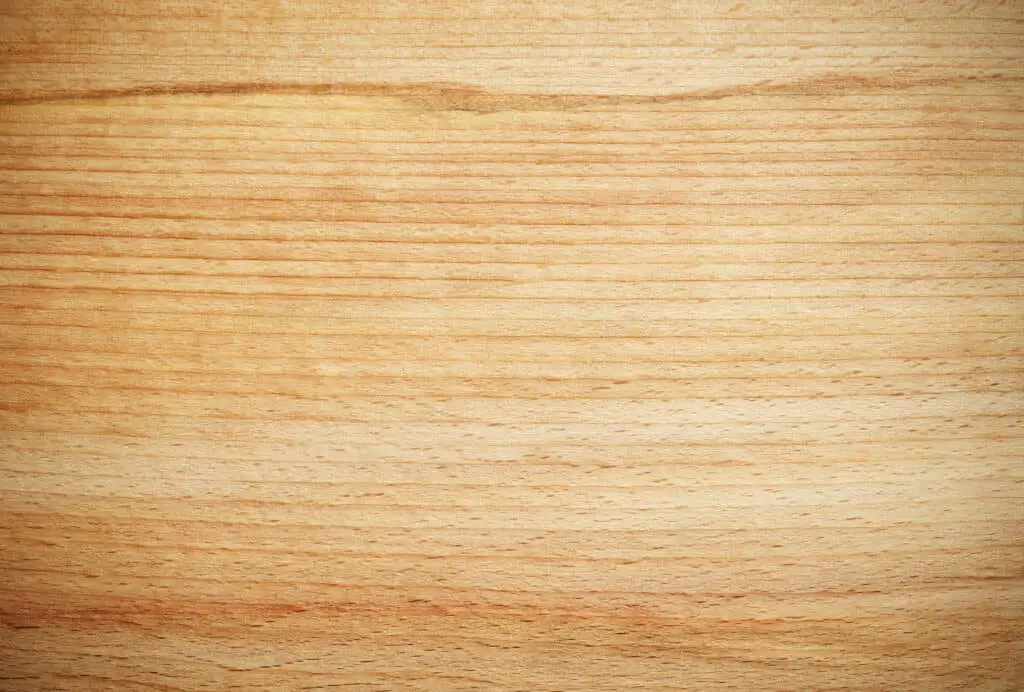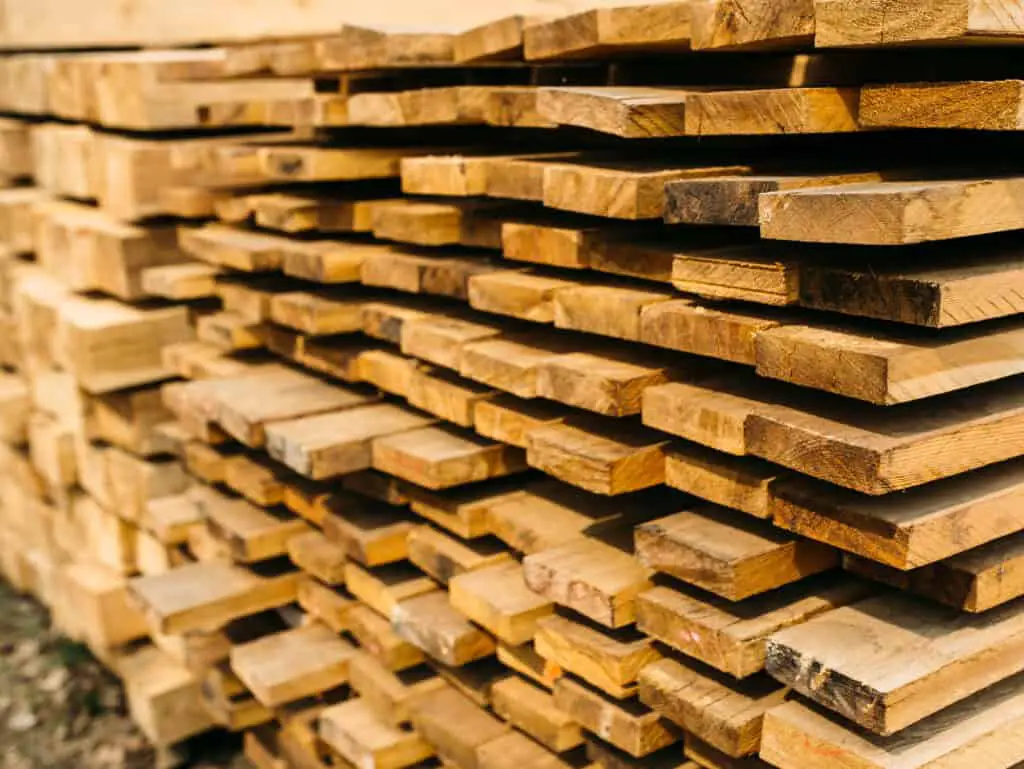Hardwood is expensive because it’s strong and durable enough to last hundreds of years. It also often has unique, eye-catching colors.
The price of hardwood depends on the provider and varies from region to region. The cheapest hardwoods available are maple, poplar, alder, white oak, beech, and ash. You can expect to pay twice as much at companies like Home Depot or Lowes; it’s better to buy from your local lumberyard.
Most hardwood is expensive because they’re stronger, durable, and have distinctive coloring. But the cheaper hardwoods, while appealing in their own right, can be worked to resemble more expensive woods.
You would be surprised how often this question comes up. We are very lucky to have a couple Master Woodworkers in our workshops who have used every type of wood imaginable on Cucamonga Woodworking and know what to buy. You can watch our past workshops on YouTube here(Link to Cucamonga Woodworking)
SPF Woods
Perhaps the cheapest wood types available are SPF woods (and no, we’re not talking about sunscreen!) In this case, SPF stands for spruce, pine, and fir. Stores like Home Depot and Lowes, and even places like your local lumber mill have will always have these woods in stock. SPF wood comes in simple, pre-cut measurements: two-by-eight, two-by-four, etc.
SPF wood might seem like the obvious choice for hardwood, because it’s cheap, lightweight, and already cut to the perfect, uniform lengths. However, these were meant for construction, not for finer woodworking such as flooring, cabinetry, or furniture.
SPF wood is only partially dried. Only half-drying the wood costs less, which makes it cheaper to buy; it also means the wood is easier to screw and nail. This is perfectly fine for construction use; but for furniture and flooring, it’s not ideal. The wood will quickly dry completely, which will take only two to three days.
When wood dries, it shrinks, which leads to twisting, bowing, and cracking. This will make the process of woodworking more frustrating than it’s worth, and may even cost you more in the long run when you have to replace ruined wood. It’s better to use other hardwoods, that haven’t been half-dried.
Soft Maple and Hard Maple
Maple is perhaps the most popular among the cheaper hardwoods. It’s clean and easy to work with; perfect to cut and shape with machines, and easy to work with by hand, whether that be by sanding or shaping. There are two different types of maple hardwood: soft maple and hard maple.
Despite the misleading name, soft maple is indeed a hardwood. It’s usually cheaper than hard maple, and lighter in weight. Soft maple has darker colors, with shades and streaks of brown, red, and gray. Hard maple, sometimes referred to as “sugar maple”, has lighter, more uniform coloring. Hard maple has longer growing cycles, which results in the growth rings being closely spaced.
Hard maple is, obviously, harder than soft maple (up to 25% harder). This hard nature usually makes the wood heavier, although you shouldn’t rely on this as the only distinguishing factor.
Both hard and soft maple are used for furniture, musical instruments, and cabinetry. Hard maple is also commonly used for flooring due to its durability. Maple wood is similar to walnut, as both are naturally very hard and durable. But the best thing about maple is that you can stain it to get the colors of more expensive, exotic woods. The addition of a wood stain can make maple woods more vibrant and appealing to the eye.
Wood is measured by board foot, which is 144 cubic inches; or, twelve inches by twelve inches by one inch. Soft maple is cheaper than hard maple, costing an average of $3 – $7 per board foot. Hard maple usually costs anywhere from $4 to $7 per board foot. As an example of more expensive wood, black walnut costs an average of $10 – $14 per board foot; Koa costs an average of $40 – $60 per board foot; ebony costs $80 – $ 150 per board foot.
A warning: Some forms of maple are toxic, especially the sawdust. Always be sure to wear the appropriate safety gear when working with maple wood.
Poplar

I could make the over-used joke about poplar wood being popular, but it’s true! Poplar is the cheapest hardwood available, and only slightly harder than pine. The distinctive gray, white, creamy yellow, or green colors, sometimes streaked with purple, gives poplar projects a unique look. However, once the wood is given a finish, the colors will begin to fade over time, giving it a more even, consistent brown color. Poplar is fine-grained; sometimes called a smooth grain. This term means the wood has a natural pattern of very small, close-together lines. Fine-grained wood has fewer knots, as well. Once fine-grained wood is sanded, it becomes very smooth.
Poplar wood is known for taking paint well. If your project will require a layer of paint, you might want to choose poplar wood. You could even use a gel stain to make poplar wood look like cherry or walnut. Painting and staining aren’t required with poplar wood. It looks fine all on its own!
Because it is prone to denting, poplar wood is usually only used as a secondary wood for bigger projects. However, denting can be fixed with a household iron and a damp rag. Even though it is prone to denting, poplar wood is resistant to decay. Once it’s been sanded, primed, and painted, it should endure normal wear and tear for many years.
On average the cheapest of the hardwoods, poplar wood costs $2 -$5 per board foot.
Alder
Alder wood, a relative of birch, is almost white in color when it’s freshly cut. Once exposed to air, the wood will change to become yellow or reddish. Alder wood is renowned for its “rustic” look, which makes it popular for statement pieces such as entry doors, cabinets, and furniture. Because of the consistency of its color, alder wood is one of the best woods for finishing.
However, alder wood is not an easy wood to stain. The small pore structure absorbs the stain unevenly. This can enhance the wood’s naturally weathered, rustic look. But if you want an even stain, you’ll need to apply a wood conditioner. Once properly conditioned, and with the correct stain, alder wood can be made to look like walnut or cherry wood.
Alder wood cuts and sands easily, and can be nailed without splitting and screwed with no need for pre-drilling. Because of its appealing color, alder wood is commonly used when making cabinets, crown moldings, paneling, and furniture. The only downside of alder wood is that it is much easier to dent and scratch than other hardwoods, like maple.
Alder wood used to be much cheaper, so much so that it was once referred to as the “poor man’s cherry”. It’s more expensive nowadays, but still one of the cheaper hardwoods. On average, Alder costs $6 – $8 per board foot.
White Oak
White oak is appealing due to its strength, durability, and beauty. The wood is richly toned, varying in color from light tan to pale yellow-brown, naturally warm with unique silver grains. The natural colors of this wood can be easily amplified by a wood finish, making it a very attractive hardwood.
White oak is the heaviest and hardest wood on this list, and it is amazingly durable. This makes it a popular hardwood for flooring and furniture. Used to build boats, this wood can easily handle the wear and tear of a common household. White oak is rot-resistant, which makes it excellent for outdoor projects; it can withstand the heat and cold easily.
Many would say white oak is the best of the cheaper hardwoods, although it’s one of the most expensive on this list. At an average cost of $6 – $8 per board foot, white oak is just as pricey as alder wood.
Beech

Widely used in Europe and a staple of IKEA furniture, beech has a very distinctive pale cream color, sometimes with hues of pink or brown. It is fine-grained, with straight patterns and an even texture. Beechwood shares similar characteristics as hard maple wood, with similar density and hardness. However, it’s much easier to work with than hard maple.
This wood is easy to work with by hand or with power tools, and it’s overall very easy to shape and cut. It’s good for nailing and gluing, and the fine pores make it easy to sand to a smooth finish. Beechwood is strong and wear-resistant, which makes it perfect for making furniture and cabinets.
However, this wood doesn’t take stain very well. It is recommended to use clear finishes when using beech wood.
Beechwood is probably the most expensive for flooring, but as a hardwood, it costs, on average, the same as alder and white oak: $6 -$8 per board foot.
Ash
This wood can have an unpleasant smell while it’s being worked with, but the odor doesn’t linger once it’s been finished. Ashwood is lightly colored, varying from beige to light brown. The colors of ash wood change depending on the conditions it’s grown in. It’s generally very light-colored, darkening to a pale yellow with brown streaks. This wood takes stains very well, too. With its distinctive coloring and the right stain, ash wood makes very attractive furniture and cabinets.
This wood is easy to work with, easily nailed, screwed, or glued. It’s known for its strength and impact tolerance. In fact, it’s used to make baseball bats. With this in mind, it should endure the wear and tear of daily use very well.
Ashwood is in the same price range as poplar wood, at around $3 – $5 per board foot.
Stains and Finishes
Although you can save money by choosing a cheaper hardwood, you’ll have to deal with the added price of staining and finishing your project. Fortunately, there are some cheaper options for both.
Wood stain is a type of paint; while normal paint covers the surface of the wood, stain seeps into the wood’s pores. A coating of stain will protect the surface of the wood, as well as color it. A properly applied stain will bring out the wood’s natural colors and texture, and give the natural grains a very dramatic look. Stain can fade, but it is easy to apply more; and the colors will only become richer when the stain is layered, as it soaks deeper into the wood.
Some DIY stains are nearly free. Coffee, tea, vinegar, walnuts, and even different types of berries can be used to stain wood. However, sometimes these alternatives aren’t practical when working with larger projects.
One method requires only coffee grounds, a steel wool pad, and vinegar. Place your coffee grounds– used grounds that don’t smell like coffee– in a quart-size jar. Then take a steel wool pad, cut it into pieces, and place it in the jar with the coffee grounds. The coffee and the steel wool will create a chemical reaction, which is activated by the vinegar. White vinegar is best, although you could use balsamic vinegar for a slightly greener color. Fill the jar completely, then seal it and leave it for a day; if you leave it for longer, your stain will be darker.
This method is cheap, but you’ll risk the stain reacting poorly with your wood. The chemicals may eat at the wood, or may not leave an even stain. You’ll also risk your finished piece smelling like coffee and vinegar. This method should be used at your own risk! Try it on a smaller project or a piece of scrap wood to test the effect.
The cheapest, professional wood stain runs at around $20 dollars for a quart. The most expensive can be an average of $100 dollars. The price will vary for quantity and quality, as well as what color and darkness you’re looking for. Some stains are better suited for different hardwoods; be sure to do your research before purchasing and applying a stain. Some hardwoods are attractive enough to not need a stain; the decision is up to you to make.
Finishing is the final step of the woodworking process. Wood finish prevents swelling and cracking of the wood, and protects against unwanted stains. Without a finish, the wood can dry out and deteriorate, resulting in a ruined product.
Some finishes can be toxic, so be sure to wear proper safety gear, such as gloves and eye protection. Keep your projects out of reach of small children and pets until the finish is completely dried.
The cheapest wood finish is about $5 for a half-pint; the most expensive is an average of $12 to $15. Fortunately, you’ll likely only need to apply finish once.

